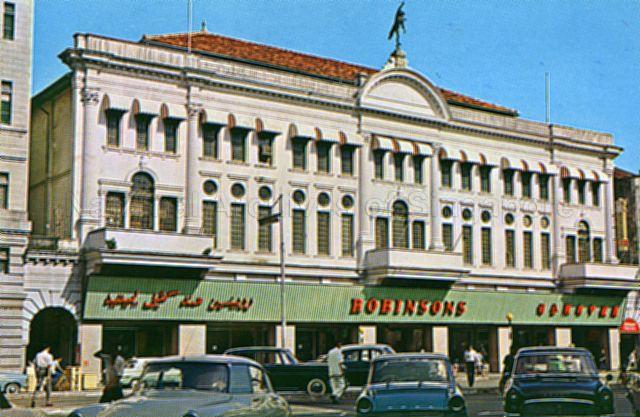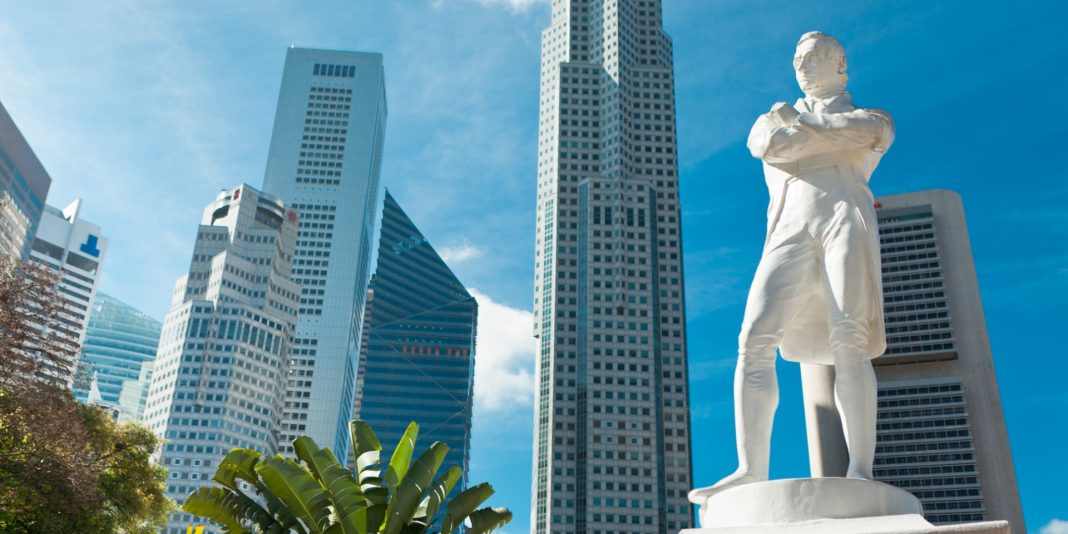“Next Stop, Raffles Place” goes the overhead intercom.
I rejoice inside as this usually means close to half the passengers in this packed-like-sardines cabin will be alighting. Like clockwork, the train pulled into the station, prompting an exodus of white-collar workers, finally giving me ample room to breathe.
When thinking about the history of Raffles Place, it’s hard to imagine that it used to be anything other than the concentration of towering steel skyscrapers that make up modern Singapore’s iconic skyline.
To understand how Singapore’s commercial heart came to be, we need to go back and see what Sir Stamford Raffles first intended it to be.
The 1822 Town Plan
Singapore was first founded by Sir Thomas Stamford Raffles in 1819. Needing a way to organise and modernise the sleepy fishing village, a Town Plan was ordered, with an early version coming into existence three years later in 1822.
Raffles intended for the growing port city to be sectioned in an orderly manner for the various ethnic communities, an idea birthed from the lessons he learnt from visiting various colonial towns in the region.
Thus, the progenitors of today’s Chinatown, Little India and Kampong Glam were seeded, along with a region loosely known as European Town. As the ethnic communities settled into their respective zones, Raffles found that a commercial centre was needed.
This was the first iteration of Raffles Places, a section dedicated for banks, trading houses, and offices. Originally called Commercial Square, and first designated as the business centre in Raffles’ 1822 Town Plan, Raffles Place has long assumed the identity of the epicentre of business in Singapore.
Strategically located near the mouth of the Singapore River, where the loading and unloading of goods naturally took place, it wasn’t long before Raffles Place came alive as the financial hub of 19th century Singapore.
The Second World War And Beyond

During the Second World War, Raffles Place wasn’t spared from the devastation. But a quick rebuilt saw the area resume its place as Singapore’s prime commercial district.
Being tabbed as a prime area since the 19th century, there have been quite a number of legendary landmarks in the district, and each played a defining role in the history of Raffles Place.

The Robinson’s Department Store stood as one of the defining architectures of Raffles Place for the better part of the 19th and 20th century. Hailed as one of the most prestigious shopping centres in Singapore at that time, it drew in tourists, office workers, and expatriates with its branded products.
On the fateful day of 21 November 1972, the Robinson’s Department Store was gutted in a terrible fire that left 9 people dead. Robinson’s relocated to Orchard and what was once an iconic silhouette on Raffles Place was no more.
Architecture styles come and go, and not many can withstand the test of time. And as society progresses, new innovative designs will naturally overtake and alter the overall makeup.
Today, the soaring towers of Raffles Place form the skyline of modern-day Singapore, the image of Singapore as the region’s financial hub. From UOB Plaza One and the One Raffles Place, to the 60-storey OUB Centre which was then the highest building in the world outside the USA, Raffles Place has been completely remodelled and most have forgotten the aesthetics of the district in the past.
While these massive modern buildings seem completely detached from the Commercial Square of before, they carry on the heritage and legacy of being the commercial epicentre of Singapore.
The architectural layout of Raffles Place has changed, and will continue to change, but the fast-moving scurrying footsteps of its people and its role as Singapore’s commercial heart looks to remain for a long time to come.




